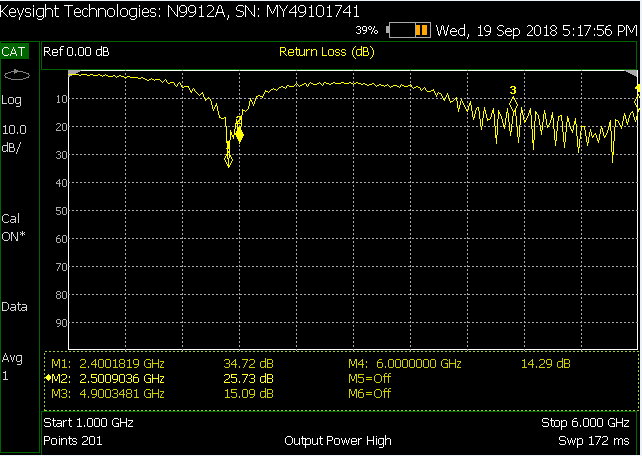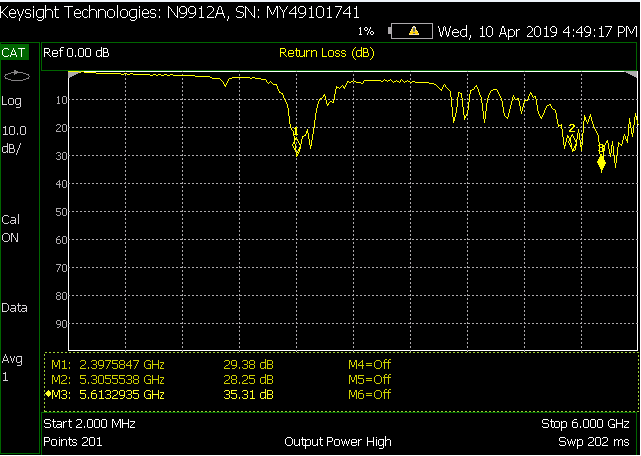In Part 1, we discussed VSWR and reflected power. Now we will focus on “Return Loss.” Together, they will help the reader understand diagnosing antenna issues.
An antenna can be swept with a meter to determine its “Return Loss.” Return loss is much more accurate than VSWR, and it tells you not just about the frequency that the transmitter is currently using but can show you how an antenna responds over a wide range of frequencies.
The sweep below shows a dual-band antenna that is resonant on both the 2Ghz and 5Ghz WiFi bands. The 2.4 band shows a return loss of about 25dB and the 5Ghz band shows a return loss of around 15dB.

10dB Return Loss, 10% of Power being Reflected
20dB Return Loss, 1% of Power being Reflected
30dB Return Loss, .1% of Power being Reflected
15dB Return Loss, A Common baseline Antenna & Cable minimum limit
15dB Return loss is roughly equivalent to 1.5:1 VSWR
Compare the Return Loss trace above with the one shown here. Both are testing dual band 2 & 5Ghz WiFi antennas, but the antenna below has a much better return loss especially in the 5Ghz band. All things being equal if the patterns of these antennas are similar, the one on the bottom is likely to perform better, especially in the 5Ghz band.

When you look at the specification sheet of a given manufacturer, they will most likely describe the bandwidth that the antenna is capable of covering in terms of VSWR with the most common being either 1.5:1 or 2.0:1. When looking at this know that a 1.5:1 is much better than a 2.0:1.
As a rule, the wider the antenna that is being made the more difficult it is for the manufacturer to be able to obtain a good Return Loss (or VSWR) across the whole band, so you will typically see them de-rate the performance specification to 2.0:1 when they list the frequencies that they are able to cover. This happens a lot in the 5Ghz band since it typically goes from 4.9 to 6Ghz and will expand soon as the lower 6Ghz frequencies become available for use on 802.11 WiFi systems.
When you first select an antenna, take the time to characterize the antenna and create a baseline trace for how it performs before you decide to deploy it at a site. This will let you know how well it is likely to perform. It also gives you a good reference point to be able to use down the line if you need to test an antenna in the field? Why is it acting this way, is it only a 15dB return loss because something is wrong or because the manufacturing process wasn’t as good. If you don’t have a baseline, you have no simple way to know.
